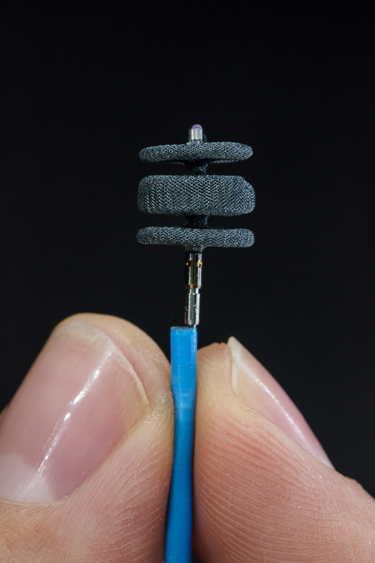Discoveries
To Mend the Smallest Hearts
Apr 30, 2017 Cedars-Sinai Staff

A tiny catheter, about the diameter of a cocktail sipping straw, helps surgeons repair preemies’ hearts. Photo: Al Cuizon
Cardiologists at Cedars-Sinai have modified a tried-and-true surgical procedure to successfully treat the most common heart problem among extremely premature babies.
Patent ductus arteriosus (PDA) occurs when a passage in the heart — that allowed blood to bypass the lungs in utero — does not seal correctly after birth. The condition leaves the newborn baby with flooded lungs from overcirculation.
The standard surgical treatment for adults and older children with PDA involves inserting a catheter into the artery to safely close the bypass. But extremely premature babies are too fragile to undergo this procedure and survive its complications. Investigators adapted the standard PDA technique using a tiny catheter inserted through the vein in the leg with ultrasound guidance.
Cedars-Sinai surgeons, in close collaboration with experts in neonatology, and thanks to specialized equipment, do the delicate work without taking the infant from the protective environment of the Neonatal Intensive Care Unit. “Other researchers have looked into this, but no one had come up with a good way to treat PDA in these fragile babies — particularly at the bedside,” says Evan M. Zahn, MD, director of the Guerin Family Congenital Heart Program in the Cedars-Sinai Heart Institute and director of Pediatric Cardiology at Cedars-Sinai. He co-developed the minimally invasive transcatheter procedure.
“We were able to adapt a commercially available device to work remarkably well for these babies, with a success rate of 88 percent. The next step will be to have a PDA device designed specifically for these tiny babies,” Zahn says.
This investigational PDA device and technique will be studied in a multi-center U.S. clinical trial directed from Cedars-Sinai.


